Wilting of primocane tips may be caused by disease or insect activity:
Fire Blight – is a bacterial disease of raspberries and blackberries. Thornless blackberries seem to be particularly susceptible to this disease, caused by the bacterium Erwinia amylovora.
Primocane tips wilt and curve in a characteristic shepherd’s-crook shape
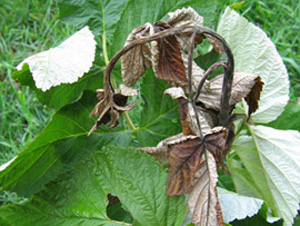
Infected tissues may be covered with bacterial ooze under warm wet weather conditions.
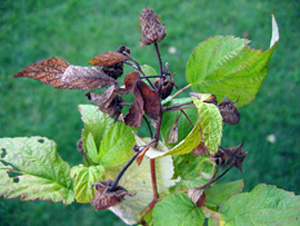
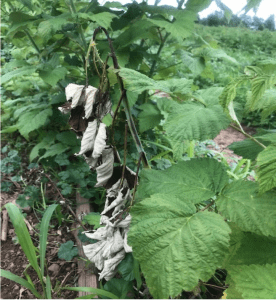
More raspberry fire blight information
Raspberry Cane Borer – (Oberea bimaculata) sometimes referred to as cane girdler, lays an egg in a d-shaped hole cut near the tip of primocanes …
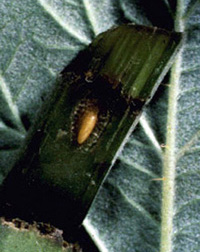
… then girdles the cane both above and below the egg.
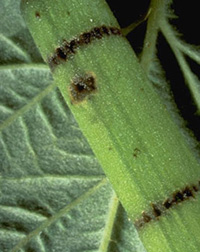
This causes the primocane tips to wilt, and in some instances, to break.
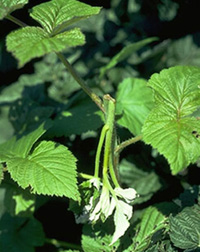
If tips are not removed below the girdle, then eggs will hatch and larvae will burrow down the cane into the crown.
More Cane Borer (Girdler) and Rednecked Cane Borer information.
Rednecked Cane Borer – (Agrilus ruficollis) lays its eggs on canes from mid-May to early July. Larvae burrow into canes where they tunnel in a spiral fashion.
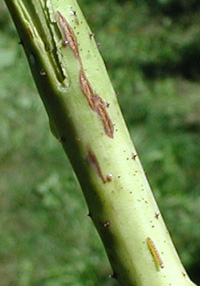
Swellings often develop around the tunnels.
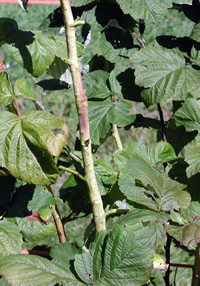
Infested canes wilt and die or become weakened. Girdled canes are also more susceptible to winter injury.
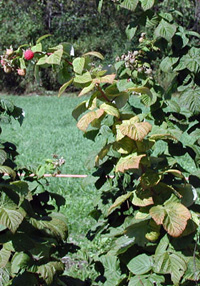
More Cane Borer (Girdler) and Rednecked Cane Borer information.


